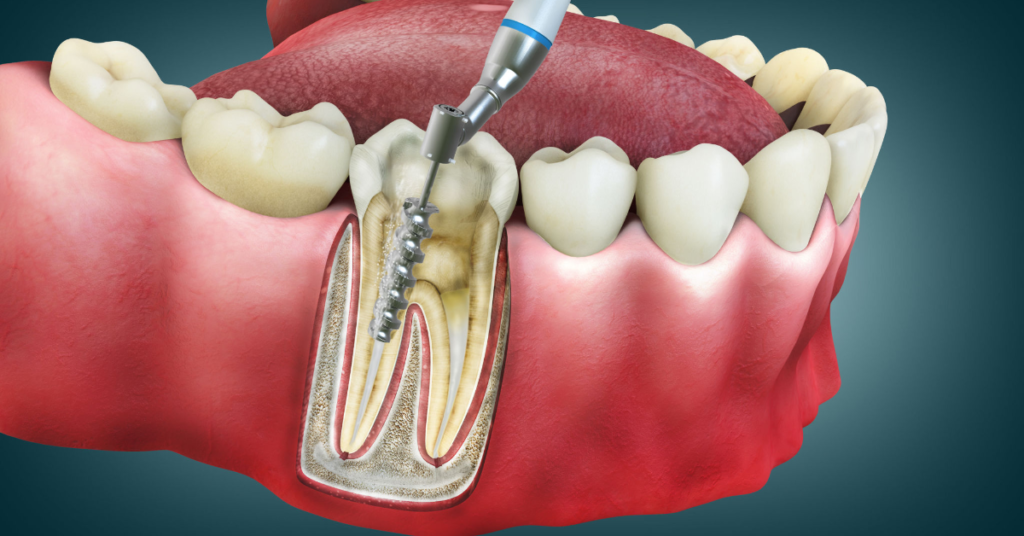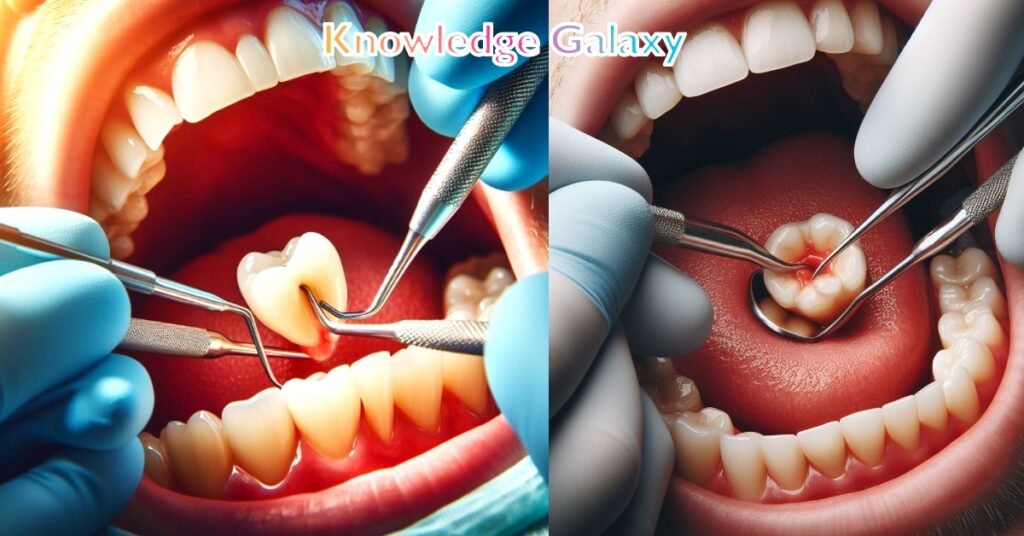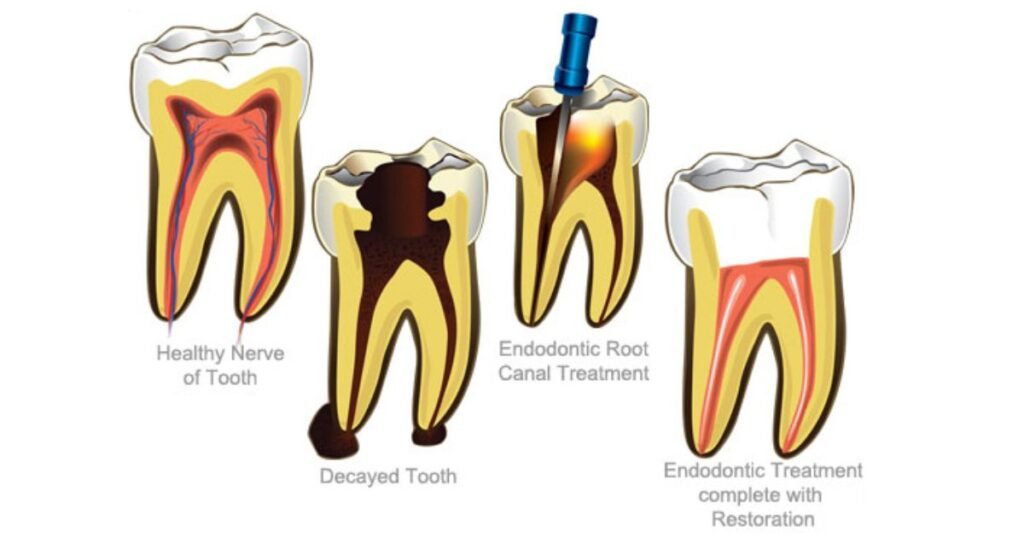Introduction to Root Canal Therapy
Over 15 million root canals are performed annually in the United States to treat inflamed or infected tooth pulp and save damaged teeth that would otherwise require extraction. While treatment success approaches 90-95%, fear or unfamiliarity with the simple procedures involved causes unnecessary anxiety for some patients. Root Canal Therapy Understanding the anatomy, purpose, procedural steps, typical recovery and follow-up care demystifies the process so patients feel confident and comfortable undergoing this routine dental surgery.
Tooth Anatomy and Infection Risk
Teeth contain a soft tissue core called dental pulp composed of nerves, connective tissues and blood vessels. The pulp chamber runs from the tooth crown down through root canal tubules embedded in the jawbone. This living tissue nourishes the tooth root and senses hot/cold stimulation or injury. Bacteria penetrating through deep dental decay, Root Canal Therapy fractures or chips can infect the vascular pulp tissue eliciting inflammation and painful abscesses requiring root canal therapy to remove infected pulp contents.
Read More: Dental and Medical

Why Root Canal Therapy is Necessary
If decay, cracks, faulty crowns or trauma exposes dental pulp to oral bacteria, untreated infection and inflammation can spread prompting excruciating pain and tooth loss. Root canal treatment removes inflamed or necrotic pulp tissue preventing further spread into supporting bone. After cleansing infected contents within the tooth roots, the chamber and canals are filled and sealed restoring a cleaned, disinfected and structurally-sound tooth. The key purposes driving root canal therapy include:
- Removing diseased, inflamed pulp tissue
- Eliminating tooth infection and halting spread
- Relieving acute pain and swelling
- Saving the damaged tooth from extraction
- Preventing bone loss from infected tooth sockets
With modern techniques, root canal success rates exceed 92% based on long-term tooth retention. Thorough irrigation, 3D imaging, magnification tools, and advanced sealants help bad teeth heal.
Signs You May Need a Root Canal
Since diseased pulp causes significant pain, knowing key trouble signs ensures prompt treatment before infections worsen or spread. Signs a root canal is needed may include:
- Severe toothache and sensitivity to hot or cold foods
- Prolonged sensitivity to hot/cold that lingers after stimulus removed
- Gum swelling near painful tooth’s root
- Darkening tooth color as nerve tissue dies
- Large dental cavities extending deep under the gum line
- Visible abscesses on x-rays near tooth roots
- Lingering pus formation around affected tooth
Scheduling an exam immediately upon experiencing these symptoms helps dentists diagnose what’s provoking discomfort so appropriate treatment can begin right away. Root Canal Therapy Catching infections early optimizes outcomes.
What to Expect During Root Canal Procedures
While each case features unique characteristics, most root canals involve these general steps:
Numbing and Access
After completely numbing the tooth and surrounding tissues, a small protective sheet isolates the affected area. An access hole is created through the top of the tooth to reach pulp tissue within.

Pulp Removal
Fine dental instruments or ultrasonic tools carefully remove infected, inflamed pulp material and debris from the tooth’s inner root canals which traverse down through the roots anchored in the jaw. 3D CT scans guide thorough interior cleaning. Irrigation fluids help flush out bacteria. Hardened cleanup pastes may be temporarily placed to further disinfect interior walls.
Inspection and Sealant
Once fully excavated, empty root canals are carefully inspected removing any remaining tissue or deposits undetected on x-ray. Clean, decontaminated walls are then Root Canal Therapy sealed with silicone-like plastic compounds preventing reinfection. Access openings are sealed as well.
Restoration and Recovery
After root canal treatments, a temporary filling is placed while interior tooth sensitivity recovers for several weeks before final restoration. Later visits assess healing before placing permanent fillings or dental crowns to strengthen the formerly infected tooth.
While more time consuming than a standard filling, patients usually report little to no discomfort during or after the precision pulp removal procedure. With strict disinfection, detailed canal cleaning and effective sealing, root canals achieve high success securing treated teeth for many additional years of chewing function.
Root Canal Recovery and Post Op Care
Within a couple days following treatment, pain dissipates allowing normal activity resumption as long as chewing stress on the affected tooth is minimized initially. Recommended post-procedure care includes:
- Taking prescribed medications as directed
- Avoiding hard or sticky foods on the treated tooth
- Maintaining diligent oral hygiene with soft brushing
- Returning promptly if you experience any renewed swelling or pain
- Completing recommended follow up and restoration procedures
Crowning or covering root canal teeth protects their structural integrity long term. With proper temporary fillings and eventual complete tooth coverage, productive tooth function is restored.
Conclusion
When dental injuries, untreated decay or severe fractures expose delicate pulp tissue to infection, root canals offer an effective way to rescue damaged teeth by surgically removing inflamed nerves and blood vessels from interior roots. Precisely cleaning and sealing deep interior architecture stabilizes teeth by eliminating diseased tissue and infection sources revitalizing smile form and function. While requiring multiple appointments for initial healing before restoration, the treatments are straightforward with dental magnification, antiseptic rinses and filling sealants preventing recurrence. Understanding the necessity and procedural steps eases patient stress surrounding this highly successful, routine dental surgery.

Read More: Root Canal Therapy
FAQs:
Do root canals damage nearby teeth?
No, root canals address only the affected tooth without impacts beyond. Neighboring teeth remain isolated from any procedures directed entirely on the tooth being treated.
Is root canal treatment very painful?
The procedure when thoroughly numbed feels little more invasive than a filling. Lingering pre-op pain from the infection is immediately relieved once diseased tissue is removed from the inner tooth.
Why might someone need a root canal retreatment?
If sealing is incomplete or decays over years, recurrence of infection can warrant root canal retreatment. Thankfully redo success approaches 75% allowing tooth salvage.
How much does getting a root canal cost?
The cost for root canal treatments ranges from $300-$2000 depending on if performed by general dentists or root canal specialists called endodontists. Dental insurance may cover some of the fees.
Are root canals worth getting or better to extract?
Over 92% of root canal treatments last at least 5 years allowing teeth to remain healthy and functional. Considering tooth replacement costs, they provide an affordable way to invest in oral health.






